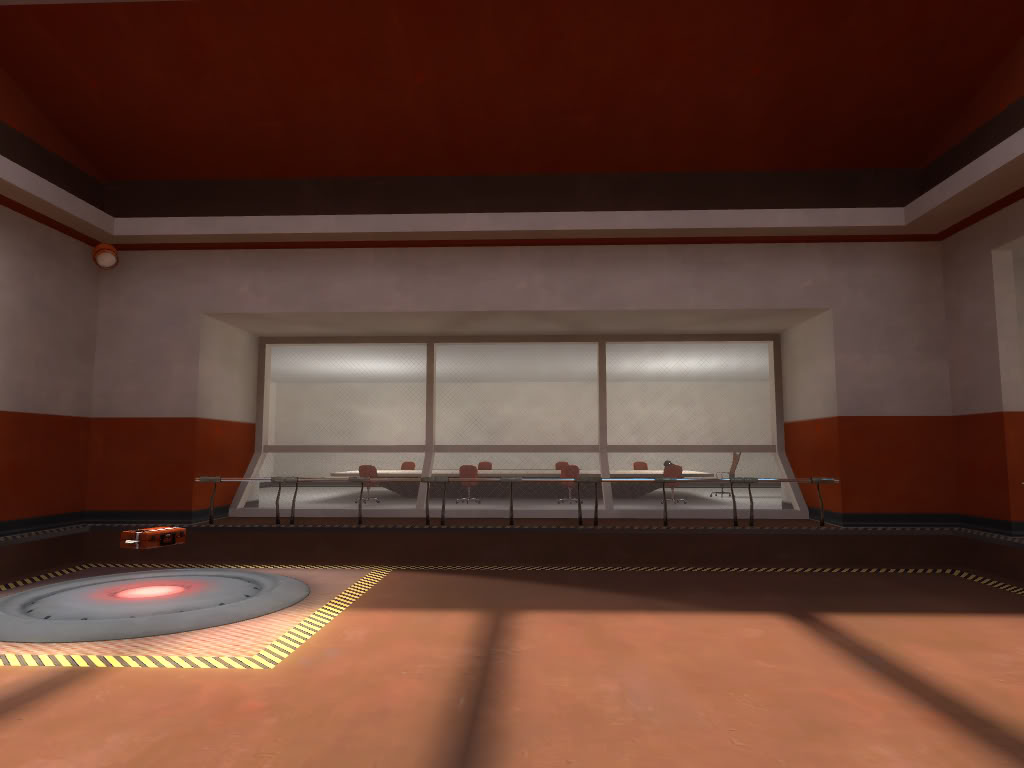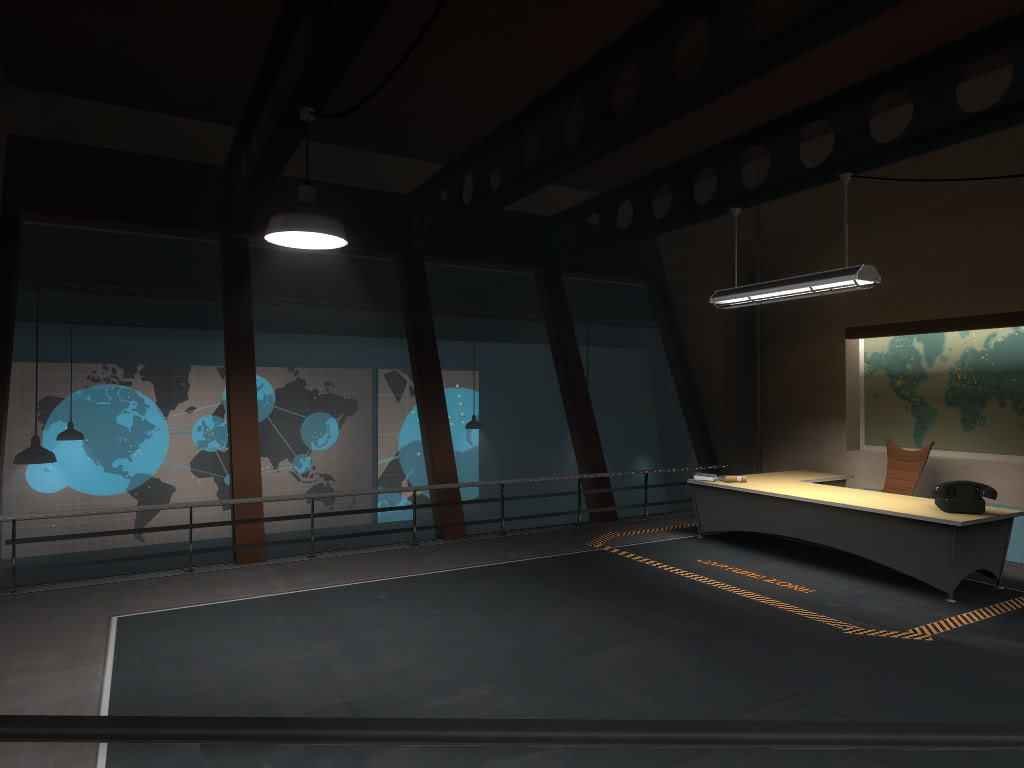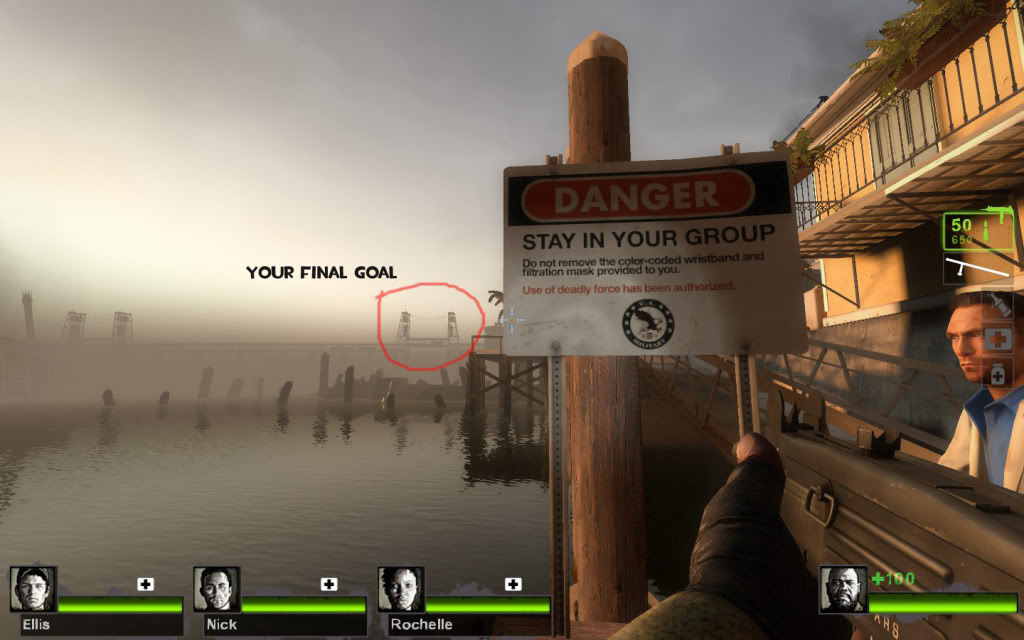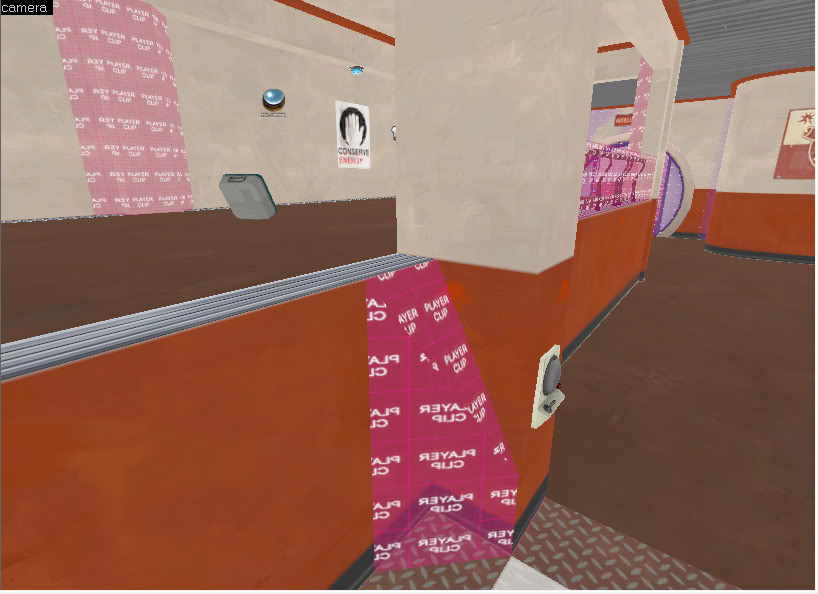- Jan 30, 2010
- 20
- 8
The following is comprised from notate from both from Valve and other sources into the subject of Level Design.
So for a while now I've been interested in one day becoming my own games designer, perhaps much like yourselves, however the path towards such is marred by obstacles of many, so to ease my passage into the industry, I've looked into the design of Valve, their publications, Audio Commentary and general openness have lead me to produce this article on the subject of level design among the other things they've talked and written about. On top of this, I've found some information on level design from other sources such as from the internet to magazines. Although the following isn't all that TF2 centric, I will try to make it as such although the information comes from more than one Valve game. However they do have many treads and ideas from one game that if you notice, will pass onto another.
Lets begin on a small, but significant TF2 level element, the idea that the map is bigger than it is, you get this a lot, open any of the official maps and I usually find a large amount of detail goes into inaccessible rooms, from what I've learned these rooms can in fact provide more than face value, in Portal, the observatory's in the chambers provide the feeling of being watched by mysterious forces, but more they also provide another light source for the chambers. Another use of light was that used in original L4D, all of the lights come from odd angles, there was no lit windows but a lot of cars with lights, thus removing any familiarity from the player, enhancing the sense of a desolate and hopeless environment. Those lit chambers and cars in L4D are an excellent application of making the world feel alive and bigger than it is. Most may never notice this, but it's more a subconscious matter, you'll always notice something that doesn't make sense or feels out of place, a bland wall to little or too many windows to no inaccessible areas that provide that small feeling to create that sense of a vast, surrounding environment. You'll never notice something that is rightfully placed within the environment, however take note these techniques where used for different games*(recommend reading through this first).
It additionally help yet again to cram your environments with narrative detail, you'll notice with any maps released, there's a slight mini story to their existence, I believe with some sort of story, be it logical or ludicrous, it can help refine and focus the design of your map. However be warned, things that stand out and look nice are morely perceived as important by players, although you want to create a world that looks like it can exists without the player, you don't want players stopping to do something out of curiosity, this not what you want in your level, you want things to be interesting, but not to the point of being overly complex that it draws the players attention from the main goal.

a simple example of creating that sense of a vast world, while still ensuring the players attention remains on the goal at hand.

here is 2fort, obviously, but what is the mini narrative here? you can easily imagine the likes of a DR. Evil sitting in that chair while his minions work below on world domination.
While on environmental issues, (well this is level design) something i find a lot within Valve games is that of foreshadowing what is to come, showing your eventual goal before you reach it, usually at the beginning the level, this is done in the likes of Portal to Left 4 Dead. I've yet to see it done within TF2, and i don't see why, with my own map idea, CP_SignelHill, i would start the attacking team just under the final point, and by adding many interesting visual aids, i would hope to coax them to look upwards to see their final goal above them, and what is to come, the reasoning behind such is that i found through the Portal commentaries that there exists a bizarre gameplay factor that players rarely look upwards, and you'd need a strong visual point of interest to guide their attention. Of course their is the HUD to tell them about the final point, however as i found through the original TF2 commentaries, you don't want players relying on 2D rather than the 3D world you've spend age's building and all of the final goals you'll see in Valve games are visual over reliance of the HUD. This doesn't mean you have to do it, but this is simply another element to consider.

you'll see this a lot in Valve games, especially L4D.
*(From the TF2 Commentary and other notes)
in TF2 you should either restrict your environments to interior spaces or canyons as types of boundaries, although these boundaries don't always have to block your view, within more realistic titles, they require fictional and visual explanations for the barriers existence, however with TF2 and it's heavily stylized world, these realistic rules simply don't apply and thus conspicuous artificiality is a core idea for design purposes, take for example the impassible railings in Hydro where i found this commentary, you can't jump over, however why would you? it's such an uninteresting area over there, it obviously isn't where I'm supposed to be going, so why bother? it never catches any attention, and thus you get away with such boundaries.
In other games any barriers in the open world should be clearly defined within reason, be it narrative or environmental or both, in Rapture of Bioshock, the obvious reason you can't leave or go to many places is because your surrounded by water, and or that Splicers in the past civil war have damaged an area beyond all repair that you can't get past, this is complimenting both of those aspects of barriers to the player, though again this doesn't apply completely to TF2.
In a lot of games you'll also see a lot of conflicting design choices have been made, it's all apart of the developers trying to achieve the correct balance between realism (verisimilitude) and idealism, gameplay factors. The player is the most important person in the entire design of the world, they must be able to read the environment, for both narrative sakes or directional to gameplay orientated, such as the chest high walls in Gears of War, totally unrealistic, but the players instinctively know that's cover and will use it to their advantage, Realism Vs Gameplay, again this was added for your interest in level design and isn't totally TF2 eccentric.
Finally I'll end on on some more of the TF2 commentary for your reference.
Complex geometry confuses the player, it makes it so that tracking enemy players becomes a hard process and most of all interferes with movement, some how though you must accommodate the area for many classes and a battle of many players, (reading the environment) most of all the capture point must be the main focal point of the area, you'll get this lot within any map.
Another interesting idea coming from the commentary is that statements generally occur around doors, (unsure if this is the case any longer) to void the loss of both teams, one should provide alternative routes, it's hard to hold an area when the enemy are coming in from all sides. One way exists uncouple the number of enemies entry points from the friendly offensive routes. But you do want these routes to acts as an interesting navigation decisions, a roue in a map should very in effectiveness based on the player class, example, a slower water route is not the choice route for a pyro, but is for a spy.
And finally remember! Playtest, discuss, modify, this the design process at Valve, although I've just started making maps and can't say I'm very good at it I've done a lot of work into their design, what elements can create a good map from my observations. There are a few other elements i know of but left out because their not at all connected to TF2 level design where as the aforementioned can apply and are added as interesting facts.
Hope you enjoyed reading this Wall with the odd pictures, Cio!
So for a while now I've been interested in one day becoming my own games designer, perhaps much like yourselves, however the path towards such is marred by obstacles of many, so to ease my passage into the industry, I've looked into the design of Valve, their publications, Audio Commentary and general openness have lead me to produce this article on the subject of level design among the other things they've talked and written about. On top of this, I've found some information on level design from other sources such as from the internet to magazines. Although the following isn't all that TF2 centric, I will try to make it as such although the information comes from more than one Valve game. However they do have many treads and ideas from one game that if you notice, will pass onto another.
Lets begin on a small, but significant TF2 level element, the idea that the map is bigger than it is, you get this a lot, open any of the official maps and I usually find a large amount of detail goes into inaccessible rooms, from what I've learned these rooms can in fact provide more than face value, in Portal, the observatory's in the chambers provide the feeling of being watched by mysterious forces, but more they also provide another light source for the chambers. Another use of light was that used in original L4D, all of the lights come from odd angles, there was no lit windows but a lot of cars with lights, thus removing any familiarity from the player, enhancing the sense of a desolate and hopeless environment. Those lit chambers and cars in L4D are an excellent application of making the world feel alive and bigger than it is. Most may never notice this, but it's more a subconscious matter, you'll always notice something that doesn't make sense or feels out of place, a bland wall to little or too many windows to no inaccessible areas that provide that small feeling to create that sense of a vast, surrounding environment. You'll never notice something that is rightfully placed within the environment, however take note these techniques where used for different games*(recommend reading through this first).
It additionally help yet again to cram your environments with narrative detail, you'll notice with any maps released, there's a slight mini story to their existence, I believe with some sort of story, be it logical or ludicrous, it can help refine and focus the design of your map. However be warned, things that stand out and look nice are morely perceived as important by players, although you want to create a world that looks like it can exists without the player, you don't want players stopping to do something out of curiosity, this not what you want in your level, you want things to be interesting, but not to the point of being overly complex that it draws the players attention from the main goal.

a simple example of creating that sense of a vast world, while still ensuring the players attention remains on the goal at hand.

here is 2fort, obviously, but what is the mini narrative here? you can easily imagine the likes of a DR. Evil sitting in that chair while his minions work below on world domination.
While on environmental issues, (well this is level design) something i find a lot within Valve games is that of foreshadowing what is to come, showing your eventual goal before you reach it, usually at the beginning the level, this is done in the likes of Portal to Left 4 Dead. I've yet to see it done within TF2, and i don't see why, with my own map idea, CP_SignelHill, i would start the attacking team just under the final point, and by adding many interesting visual aids, i would hope to coax them to look upwards to see their final goal above them, and what is to come, the reasoning behind such is that i found through the Portal commentaries that there exists a bizarre gameplay factor that players rarely look upwards, and you'd need a strong visual point of interest to guide their attention. Of course their is the HUD to tell them about the final point, however as i found through the original TF2 commentaries, you don't want players relying on 2D rather than the 3D world you've spend age's building and all of the final goals you'll see in Valve games are visual over reliance of the HUD. This doesn't mean you have to do it, but this is simply another element to consider.

you'll see this a lot in Valve games, especially L4D.
*(From the TF2 Commentary and other notes)
in TF2 you should either restrict your environments to interior spaces or canyons as types of boundaries, although these boundaries don't always have to block your view, within more realistic titles, they require fictional and visual explanations for the barriers existence, however with TF2 and it's heavily stylized world, these realistic rules simply don't apply and thus conspicuous artificiality is a core idea for design purposes, take for example the impassible railings in Hydro where i found this commentary, you can't jump over, however why would you? it's such an uninteresting area over there, it obviously isn't where I'm supposed to be going, so why bother? it never catches any attention, and thus you get away with such boundaries.
In other games any barriers in the open world should be clearly defined within reason, be it narrative or environmental or both, in Rapture of Bioshock, the obvious reason you can't leave or go to many places is because your surrounded by water, and or that Splicers in the past civil war have damaged an area beyond all repair that you can't get past, this is complimenting both of those aspects of barriers to the player, though again this doesn't apply completely to TF2.
In a lot of games you'll also see a lot of conflicting design choices have been made, it's all apart of the developers trying to achieve the correct balance between realism (verisimilitude) and idealism, gameplay factors. The player is the most important person in the entire design of the world, they must be able to read the environment, for both narrative sakes or directional to gameplay orientated, such as the chest high walls in Gears of War, totally unrealistic, but the players instinctively know that's cover and will use it to their advantage, Realism Vs Gameplay, again this was added for your interest in level design and isn't totally TF2 eccentric.
Finally I'll end on on some more of the TF2 commentary for your reference.
Complex geometry confuses the player, it makes it so that tracking enemy players becomes a hard process and most of all interferes with movement, some how though you must accommodate the area for many classes and a battle of many players, (reading the environment) most of all the capture point must be the main focal point of the area, you'll get this lot within any map.
Another interesting idea coming from the commentary is that statements generally occur around doors, (unsure if this is the case any longer) to void the loss of both teams, one should provide alternative routes, it's hard to hold an area when the enemy are coming in from all sides. One way exists uncouple the number of enemies entry points from the friendly offensive routes. But you do want these routes to acts as an interesting navigation decisions, a roue in a map should very in effectiveness based on the player class, example, a slower water route is not the choice route for a pyro, but is for a spy.
And finally remember! Playtest, discuss, modify, this the design process at Valve, although I've just started making maps and can't say I'm very good at it I've done a lot of work into their design, what elements can create a good map from my observations. There are a few other elements i know of but left out because their not at all connected to TF2 level design where as the aforementioned can apply and are added as interesting facts.
Hope you enjoyed reading this Wall with the odd pictures, Cio!

